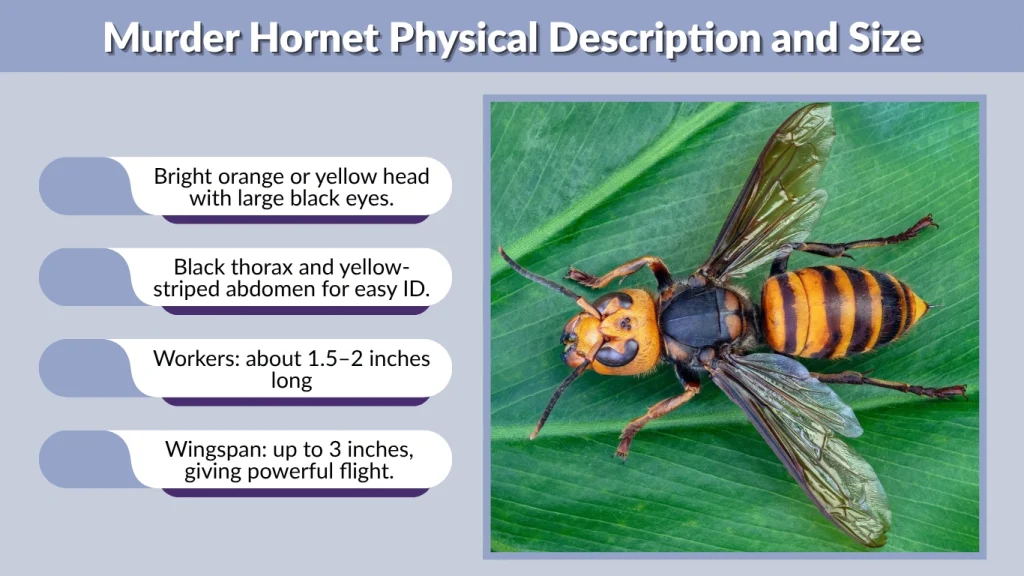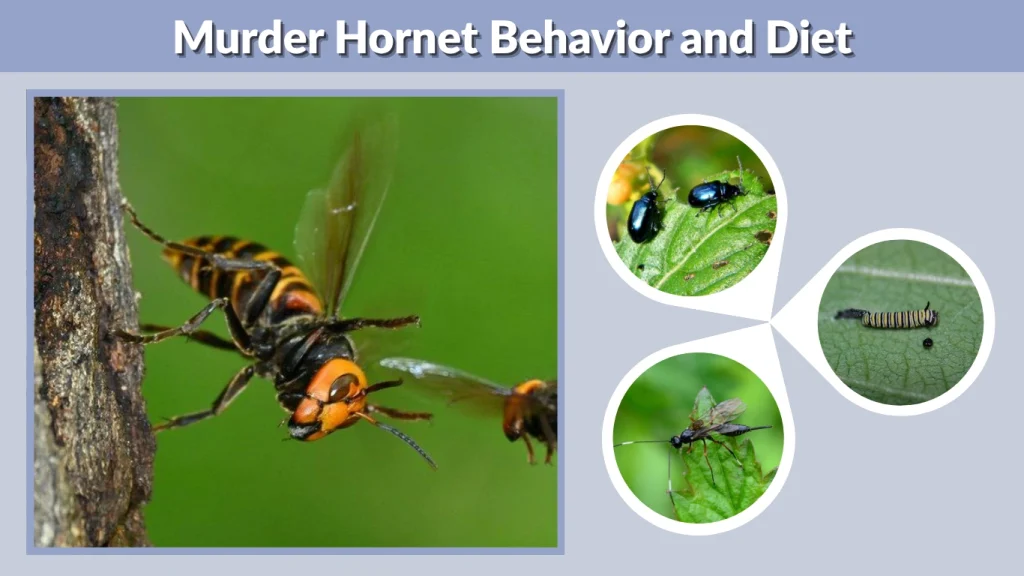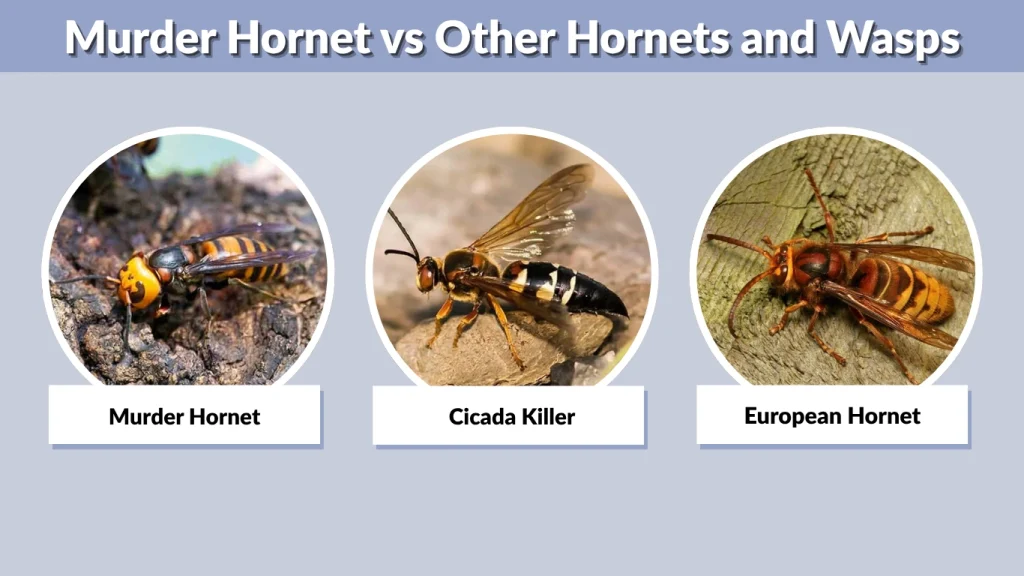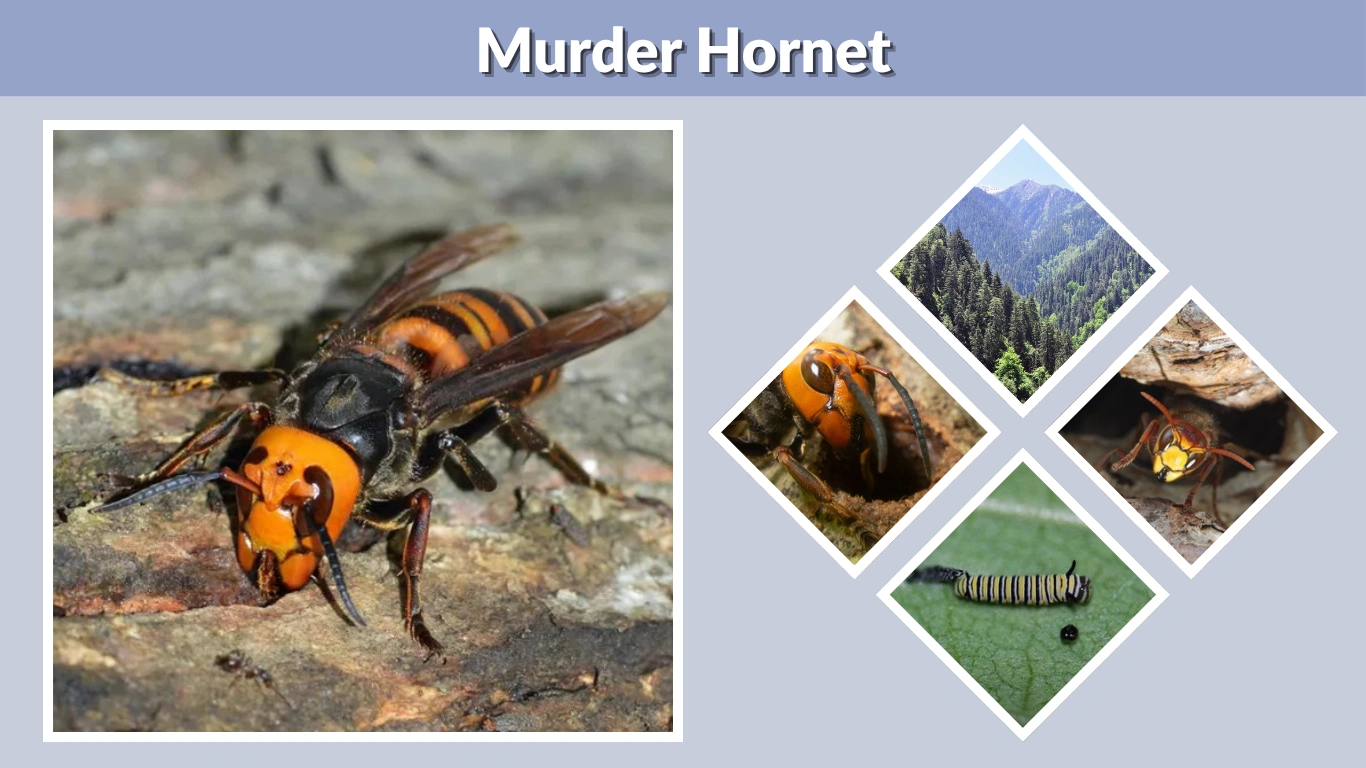The “murder hornet” is the world’s largest hornet species, known scientifically as Vespa mandarinia. Often called the Asian giant hornet, it gained worldwide attention in 2020 when it was first discovered in the United States. With its intimidating size, potent sting, and threat to honeybees, this insect became a symbol of fear and fascination. Despite its deadly nickname, the murder hornet plays a complex role in nature and is not as menacing to humans as the media once portrayed.
What Is a Murder Hornet?
A murder hornet is an invasive species originally from East Asia, primarily found in Japan, China, and parts of Korea. It is the largest hornet in the world, growing up to 2 inches long. These hornets are apex insect predators, capable of wiping out entire honeybee colonies within hours. Their nickname “murder hornet” was popularized by the media due to their destructive attacks on bees and their powerful sting.
The scientific name, Vespa mandarinia, reflects its Asian origin. In Japan, it is called the “giant sparrow bee” because of its massive size and buzzing flight. While it rarely interacts with humans, its venomous sting and aggressive behavior when threatened have earned it a fearsome reputation.
Physical Description and Size

Appearance
- Bright orange or yellow head with large black eyes.
- Black thorax and yellow-striped abdomen for easy ID.
- Strong mandibles used for hunting and defense.
- Transparent brown wings with a loud buzz in flight.
- Thick, armored body — more robust than wasps or bees.
Size and Stinger
- Workers: about 1.5–2 inches long; queens slightly larger.
- Wingspan: up to 3 inches, giving powerful flight.
- Stinger length: around 6 mm, capable of piercing fabric.
- Can sting multiple times without dying (unlike honeybees).
- Among the largest hornets ever recorded worldwide.
Native Range and Habitat

Origin and Distribution
The murder hornet is native to the temperate and tropical regions of East Asia. It thrives in low mountain forests and rural farmlands, where it builds nests close to the ground. In Japan and China, it plays an important ecological role as both predator and pollinator. Its populations are stable in these native regions, where local ecosystems have evolved to coexist with it.
These hornets prefer environments with plenty of prey and suitable nesting spaces such as hollow logs, burrows, or abandoned rodent holes. They are most active in late spring and summer when colonies expand and worker hornets hunt aggressively to feed their larvae.
Invasion in the United States
The species gained global notoriety when it was first spotted in Washington State in 2019, with official confirmation in 2020. Entomologists quickly identified the hornets as Vespa mandarinia and began urgent efforts to contain the potential invasion.
Scientists suspected that the hornets entered the U.S. through international shipping containers. Subsequent sightings were reported in Washington, British Columbia, and a few southern U.S. states like Texas and Georgia. However, most nests found in North America were swiftly eradicated through coordinated efforts by the Washington State Department of Agriculture (WSDA).
Today, there is no evidence of a widespread murder hornet population in the United States. Regular monitoring programs continue to prevent reintroduction and protect native pollinators.
Behavior and Diet

Feeding Habits
Murder hornets are carnivorous and feed on other insects, especially honeybees. They are infamous for their “bee slaughter phase,” during which small groups of hornets invade hives and decapitate bees. Afterward, they carry the bee thoraxes back to their nest to feed their larvae. This behavior can completely destroy a honeybee colony in just a few hours.
Aside from bees, murder hornets also hunt beetles, caterpillars, and other wasps. Adults feed on tree sap and fruit juices for energy. While they can devastate managed bee populations, in their native habitats, they help regulate insect numbers and contribute to the balance of ecosystems.
Reproduction and Lifecycle
Each colony begins in spring when a fertilized queen emerges from hibernation and searches for a nesting site. She lays eggs that hatch into larvae, which are fed by the queen until they mature into worker hornets. By summer, the colony reaches its peak population, sometimes exceeding 400 individuals.
As autumn arrives, new queens and males are produced. After mating, only the queens survive through winter by hibernating underground. The old colony dies off, completing the annual life cycle before the next generation begins.
The Sting: Power, Pain, and Danger

How the Sting Works
The murder hornet’s sting is among the most painful of any insect in the world. Its stinger, nearly a quarter-inch long, injects a powerful venom containing neurotoxins and enzymes that break down tissue and cause severe burning pain. Unlike bees, these hornets can sting multiple times, making them even more dangerous during defensive attacks.
People who have been stung describe the sensation as a “hot nail” being driven into the skin. The swelling can last for several days and may lead to blistering. For most healthy adults, the sting is not fatal, but multiple stings or allergic reactions can be serious and require medical attention.
Are Murder Hornets Deadly to Humans?
Despite their menacing nickname, murder hornets rarely attack humans unless provoked. In Japan, where they are native, around 30 to 50 people die each year due to allergic reactions or multiple stings — far fewer than deaths caused by bees or wasps globally.
Their venom isn’t usually lethal, but it can cause anaphylactic shock in sensitive individuals. Quick medical treatment with antihistamines or epinephrine typically prevents serious complications.
While the “murder” in their name implies deadly aggression, these hornets prefer to avoid conflict with humans, focusing instead on hunting other insects to feed their larvae.
Impact on Bees and the Environment
Threat to Honeybee Populations
One of the biggest ecological concerns regarding murder hornets is their devastating effect on honeybee colonies. A single hornet can kill dozens of bees in minutes, and a small group can destroy thousands within hours. Their attacks are swift and coordinated — they decapitate bees and carry the remains back to feed their young.
This behavior poses a serious threat to agriculture, as honeybees are essential pollinators for many crops. If murder hornets were to establish permanent populations in North America, the impact on beekeeping and pollination could be significant.
Interestingly, Japanese honeybees have evolved a defense mechanism — they surround invading hornets and vibrate their wings to generate heat, effectively “cooking” the hornet alive. Unfortunately, European honeybees in the U.S. lack this adaptation, making them vulnerable.
Ecological Role
In their native ecosystems, murder hornets are not merely villains — they help regulate insect populations by preying on weaker species. They also feed on sap and fruits, indirectly contributing to nutrient recycling. Their existence highlights the complexity of predator-prey relationships in nature, showing that even the most feared insects serve a purpose.
Eradication and Control Efforts
U.S. Government Response
When murder hornets were first detected in Washington State in 2019, scientists and officials acted quickly. The Washington State Department of Agriculture (WSDA) launched an intensive eradication campaign using traps, drones, and radio trackers.
In late 2020, the first nest — containing nearly 200 queens — was located and destroyed near Blaine, Washington. Additional nests were found and eliminated in 2021 and 2022, preventing the hornets from spreading further south.
Special vacuum devices and carbon dioxide were used to capture hornets alive for study. Since then, no significant populations have been reported in the U.S., suggesting that eradication efforts were largely successful.
Prevention and Monitoring
The WSDA continues to monitor for new sightings each year, especially near ports and trade routes. Public awareness campaigns encourage residents to report suspicious hornets or nests.
Researchers also collaborate internationally to track the hornet’s movements and understand its potential spread. Preventing reintroduction through imported goods remains a top priority, as global trade can easily transport insects across borders.
Murder Hornet vs Other Hornets and Wasps

Murder Hornet vs Cicada Killer
Cicada killers are often mistaken for murder hornets due to their large size, but they are solitary wasps that rarely sting humans. While murder hornets live in colonies and attack aggressively when threatened, cicada killers focus on hunting cicadas to feed their larvae.
Cicada killers have more slender bodies and red or orange markings, whereas murder hornets are bulkier with darker, more vivid coloring. Most importantly, cicada killers are harmless to people and beneficial for the ecosystem.
Murder Hornet vs European Hornet
The European hornet, another large wasp species found in North America, is smaller than the murder hornet but shares similar coloration. European hornets are generally less aggressive and rarely attack humans. They build paper nests above ground, while murder hornets prefer underground nests.
The murder hornet’s size, longer stinger, and predatory behavior toward bees set it apart. Understanding these differences helps avoid unnecessary panic and protects native hornet species that play vital ecological roles.
Cultural Impact and Media Attention
2020 Panic and Public Reaction
The arrival of the murder hornet in 2020 coincided with global pandemic headlines, amplifying fear and misinformation. Social media exploded with viral memes, videos, and exaggerated claims about giant killer hornets threatening U.S. communities.
While the danger was real for honeybee populations, experts quickly clarified that murder hornets were not widespread or a direct danger to people. The media frenzy, however, sparked public interest in entomology and invasive species awareness.
In Popular Culture
The hornet’s fearsome name has inspired everything from hot sauce branding to video game enemies. Even the F-18 fighter jet is nicknamed the “Murder Hornet” due to its power and speed. In online culture, the hornet became a symbol of 2020’s chaotic energy — another “plot twist” in a year full of surprises.
Current Status (2024 Update)
As of 2024, no established populations of murder hornets have been found in the United States. Continuous trapping and surveillance have helped prevent their spread. In Asia, populations remain stable and are considered a natural part of local ecosystems.
While scientists remain vigilant, the “murder hornet invasion” appears to be under control. Ongoing public awareness and cooperation ensure that early detection will stop future outbreaks before they grow.
FAQs
What is a murder hornet and where does it come from?
The murder hornet, or Vespa mandarinia, is the world’s largest hornet native to East Asia. It first gained attention in 2020 after sightings in Washington State. These hornets are powerful predators known for attacking honeybees and defending their nests aggressively.
How big can a murder hornet get?
Adult murder hornets typically grow between 1.5 and 2 inches long, with queens slightly larger. Their wings can span over 3 inches, and their stinger measures around 6 millimeters, making it one of the longest among hornets.
Can a murder hornet sting kill a human?
While extremely painful, murder hornet stings are rarely fatal. Deaths usually occur from allergic reactions or multiple stings. For most people, the venom causes swelling, redness, and burning pain that fades over several days.
Are murder hornets still found in the United States?
No, current reports show that murder hornets have been successfully eradicated from Washington State and nearby regions. Ongoing monitoring ensures any new sightings are investigated immediately to prevent reestablishment.
How did officials get rid of the murder hornets in Washington?
Teams used radio trackers, traps, and vacuum devices to locate and remove nests. Once nests were found, they were sealed and destroyed. This rapid response, along with public cooperation, helped stop the spread of the hornets before they became established.


